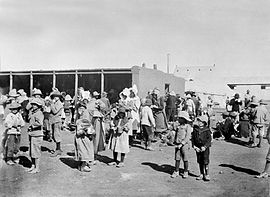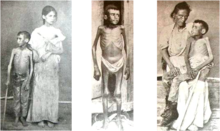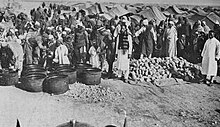
During World War II, the United States forcibly relocated and incarcerated about 120,000 people of Japanese descent in ten concentration camps operated by the War Relocation Authority (WRA), mostly in the western interior of the country. Approximately two-thirds of the detainees were United States citizens. These actions were initiated by Executive Order 9066, issued by President Franklin D. Roosevelt on February 19, 1942, following Imperial Japan's attack on Pearl Harbor in December 1941. Before the war, about 127,000 Japanese Americans lived in the continental United States, of which about 112,000 lived on the West Coast. About 80,000 were Nisei and Sansei. The rest were Issei immigrants born in Japan, who were ineligible for citizenship. In Hawaii, where more than 150,000 Japanese Americans comprised more than one-third of the territory's population, only 1,200 to 1,800 were incarcerated.

A labor camp or work camp is a detention facility where inmates are forced to engage in penal labor as a form of punishment. Labor camps have many common aspects with slavery and with prisons. Conditions at labor camps vary widely depending on the operators. Convention no. 105 of the United Nations International Labour Organization (ILO), adopted internationally on 27 June 1957, abolished camps of forced labor.

The rights of civilian and military prisoners are governed by both national and international law. International conventions include the International Covenant on Civil and Political Rights; the United Nations' Minimum Rules for the Treatment of Prisoners, the European Committee for the Prevention of Torture and Inhuman or Degrading Treatment or Punishment, and the Convention on the Rights of Persons with Disabilities.

Penal labour is a term for various kinds of forced labour that prisoners are required to perform, typically manual labour. The work may be light or hard, depending on the context. Forms of sentence involving penal labour have included involuntary servitude, penal servitude, and imprisonment with hard labour. The term may refer to several related scenarios: labour as a form of punishment, the prison system used as a means to secure labour, and labour as providing occupation for convicts. These scenarios can be applied to those imprisoned for political, religious, war, or other reasons as well as to criminal convicts.

Extermination through labour is a term that was adopted to describe forced labor in Nazi concentration camps whose inmates were held in inhumane conditions and suffered a high mortality rate; in some camps most prisoners died within a few months of incarceration. In the 21st century, research has questioned whether there was a general policy of extermination through labor in the Nazi concentration camp system because of widely varying conditions between camps. German historian Jens-Christian Wagner argues that the camp system involved the exploitation of forced labor of some prisoners and the systematic murder of others, especially Jews, with only limited overlap between these two groups.
Administrative detention is arrest and detention of individuals by the state without trial. A number of jurisdictions claim that it is done for security reasons. Many countries claim to use administrative detention as a means to combat terrorism or rebellion, to control illegal immigration, or to otherwise protect the ruling regime.
The penal system in China is composed of an administrative detention system and a judicial incarceration system. As of 2020, it is estimated that 1.7 million people had been incarcerated in China, which is the second-highest prison population after the United States. China also retains the use of the death penalty with the approval of the Supreme People's Court, and there is a system of death penalty with reprieve in which the sentence is suspended unless the convict commits another major crime within two years while they are detained.

Crimes against humanity under communist regimes occurred during the 20th century, and they included forced deportations, massacres, torture, forced disappearances, extrajudicial killings, political terrorization campaigns, ethnic cleansing, and enslavement, as well as the deliberate starvation of people. Additional events included the commition of genocide, conspiracy to commit genocide, and complicity in genocide. Such events have been described as crimes against humanity.
Filtration camps, also known as concentration camps, were camps used by the Russian forces for their mass internment centers during the First Chechen War and then again during the Second Chechen War.

The Xinjiang internment camps, officially called vocational education and training centers by the government of China, are internment camps operated by the government of Xinjiang and the Chinese Communist Party Provincial Standing Committee. Human Rights Watch says that they have been used to indoctrinate Uyghurs and other Muslims since 2017 as part of a "people's war on terror", a policy announced in 2014. The camps have been criticized by the governments of many countries and human rights organizations for alleged human rights abuses, including mistreatment, rape, and torture, with some of them alleging genocide. Some 40 countries around the world have called on China to respect the human rights of the Uyghur community, including countries such as Canada, Germany, Turkey and Japan. The governments of more than 35 countries have expressed support for China's government. Xinjiang internment camps have been described as "the most extreme example of China's inhumane policies against Uighurs".
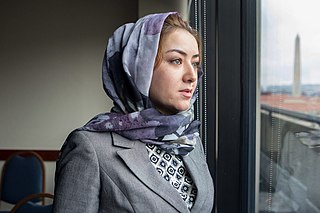
Mihrigul Tursun or Mehrigul Tursun, is a reported former Uyghur detainee from Xinjiang, China. After immigrating to the United States in 2018, Tursun claimed that she was taken into the custody of Chinese authorities several times, including being imprisoned at one of a network of political "re-education camps" for Uyghurs, subject to torture, and that one of her sons died while she was in the custody of Chinese authorities in 2015. Her story was widely reported in international media. In 2019 Hua Chunying of the Ministry of Foreign Affairs of the People's Republic of China denied Tursun's allegations and gave the Ministry's own account of events.
Andrea Pitzer is an American journalist, known for her books One Long Night: A Global History of Concentration Camps and The Secret History of Vladimir Nabokov. Pitzer's third book, Icebound: Shipwrecked at the Edge of the World, was published in 2021.

The Chinese government is committing a series of ongoing human rights abuses against Uyghurs and other ethnic and religious minorities in Xinjiang that is often characterized as persecution or as genocide. Beginning in 2014, the Chinese government, under the administration of Chinese Communist Party (CCP) General Secretary Xi Jinping, incarcerated more than an estimated one million Turkic Muslims without any legal process in internment camps. Operations from 2016 to 2021 were led by Xinjiang CCP Secretary Chen Quanguo. It is the largest-scale detention of ethnic and religious minorities since World War II. The Chinese government began to wind down the camps in 2019. Amnesty International states that detainees have been increasingly transferred to the formal penal system.

The China Cables are a collection of secret Chinese government documents from 2017 which were leaked by exiled Uyghurs to the International Consortium of Investigative Journalists, and published on 24 November 2019. The documents include a telegram which details the first known operations manual for running the Xinjiang internment camps, and bulletins which illustrate how China's centralized data collection system and mass surveillance tool, known as the Integrated Joint Operations Platform, uses artificial intelligence to identify people for interrogation and potential detention.
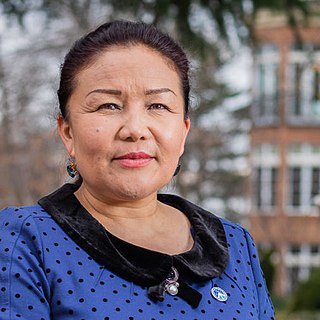
Sayragul Sauytbay is a Kazakh doctor, headteacher and whistleblower from China. In 2018, she fled China and then told the media about the Xinjiang internment camps resembling modern-day concentration camps where people are "re-educated" in China. She became one of the first victims of these camps in the world to speak publicly about the Chinese repressive campaign against Muslims, igniting a movement against these abuses. Sweden offered her political asylum after Kazakhstan refused, and she subsequently emigrated there.
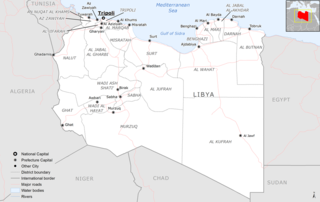
Detention centres in Libya are criminal enterprises run by gangs of human traffickers and kidnappers for profit. Lawlessness in Libya has resulted in circumstances where criminals gangs abduct and detain people who are migrating to or through Libya. 5,000 migrants are held in dozens of camps that are mostly located around Bani Walid. Detainees often suffer torture and may face execution if their family do not pay ransoms to the gangs.

Filtration camps, also referred to as concentration camps, are camps used by Russian forces during the 2022 Russian invasion of Ukraine to register, interrogate, and detain Ukrainian citizens in regions under Russian occupation before transferring them into Russia, sometimes as part of forced population transfers. Filtration camp detainees undergo a system of security checks and personal data collection. Detainees are subject to widespread torture, killings, rape, starvation and other grave human rights violations.
